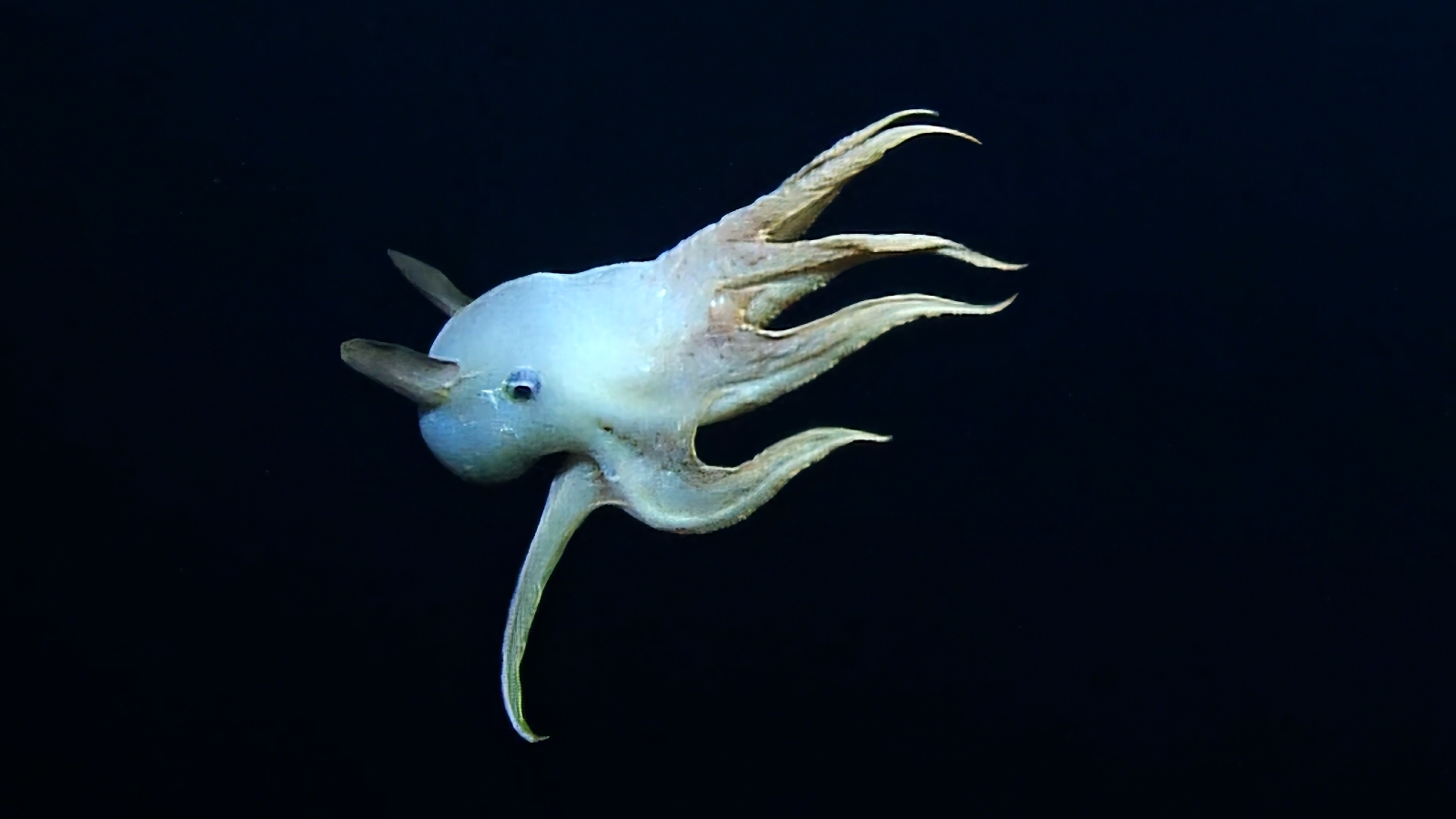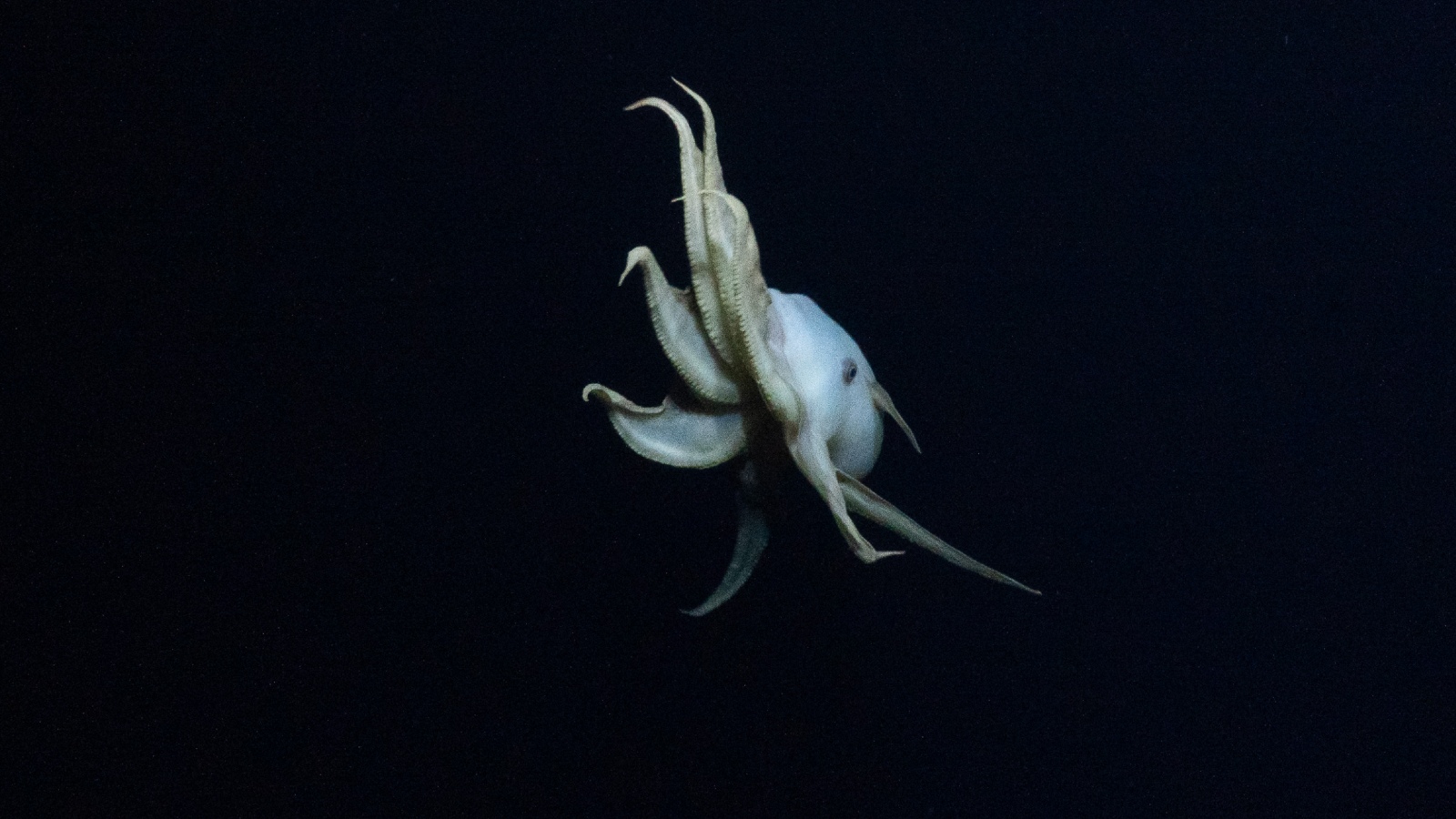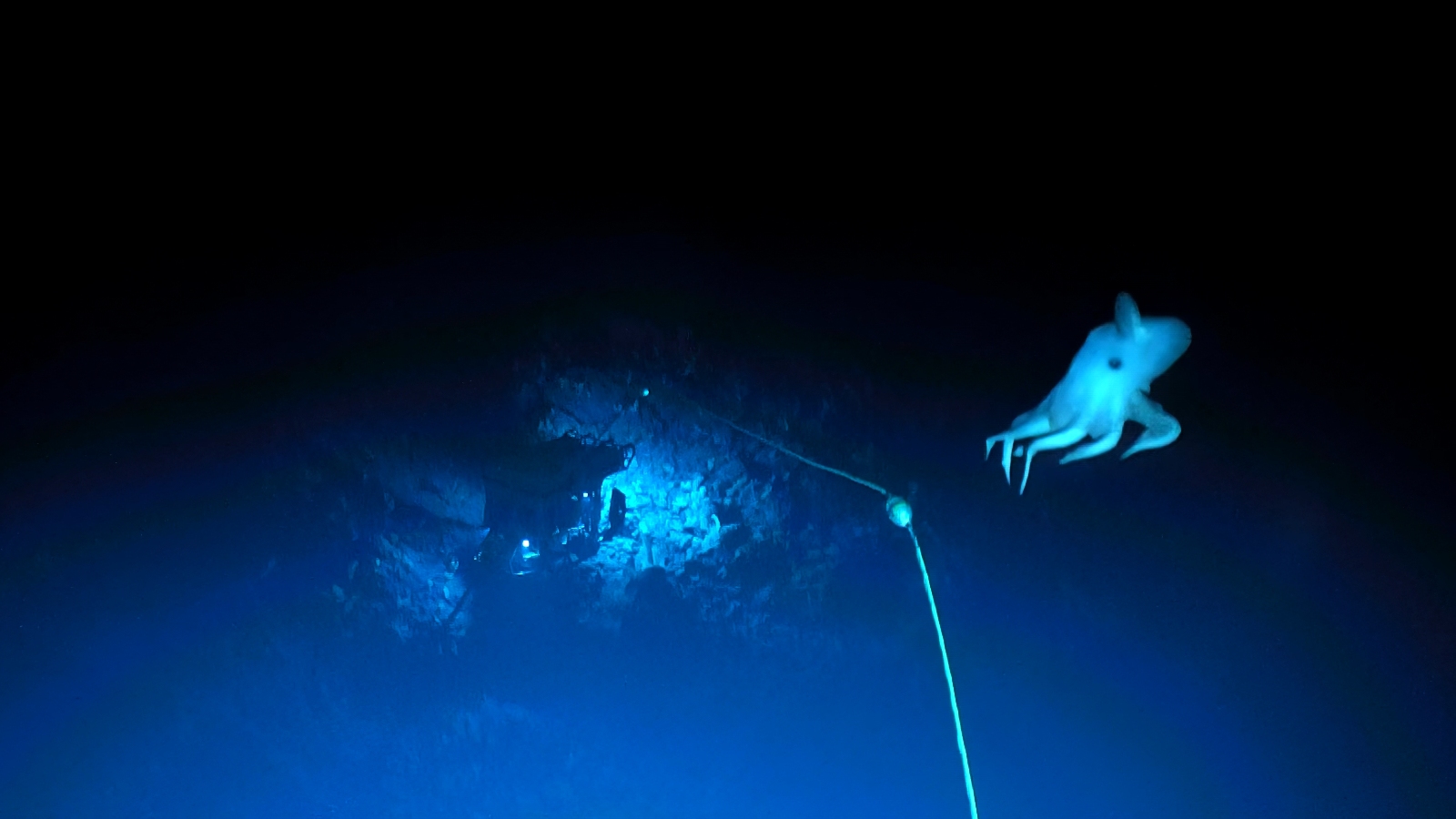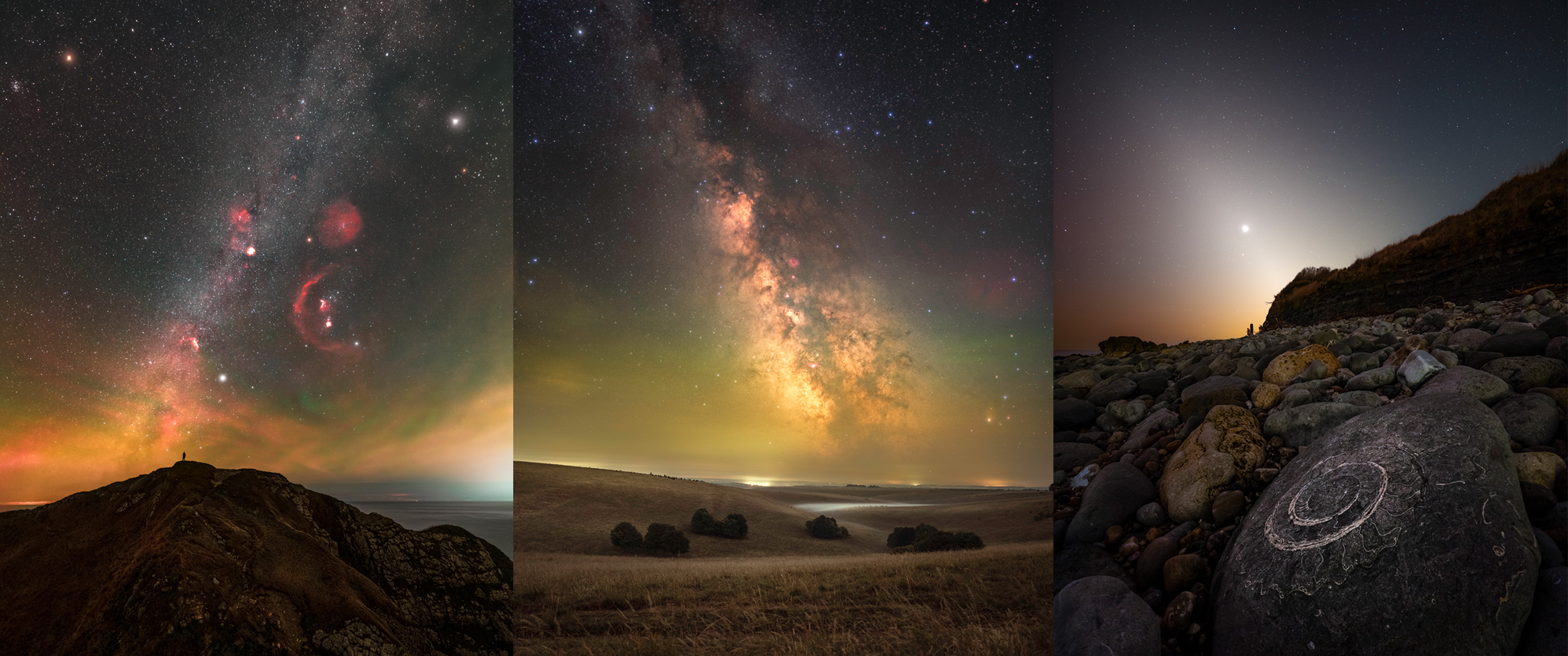Watch ghostly dumbo octopus swim with its massive 'ears' in rare new footage
On an expedition in Hawaii, a remote underwater vehicle filmed a dumbo octopus swimming with its ear-like fins near the seafloor. The pale white creature is one of the deepest-dwelling octopuses on Earth.
Researchers exploring an underwater mountain in Hawaii's deep sea recently stumbled across a rare, "ghostly" dumbo octopus — one of the deepest dwelling octopuses on Earth — flapping its large ear-like fins as it swam near the seafloor, a new video reveals.
The unidentified species of dumbo octopus, from the genus Grimpoteuthis, was spotted Sept. 13 by researchers aboard Ocean Exploration Trust's (OET) Exploration Vessel "Nautilus." The team was exploring a seamount in the north of Papahānaumokuākea Marine National Monument (PMNM) — one of the world's largest marine protected areas — using a remotely operated vehicle (ROV) at a depth of around 5,500 feet (1,675 meters) when they came across the pale white cephalopod, researchers wrote in a statement.
Video footage from the dive, which was live-streamed online, shows the dumbo octopus slowly pushing itself through the water with its ear-like fins just a few feet above the seafloor. This unusual form of locomotion strongly resembles the flying elephant Dumbo, from the classic Disney film, which inspired these octopuses' name.
"Oh, look at the flappy ears!" one researcher exclaimed during a commentary of the live feed. "I'm so glad we got to see this beautiful creature," another added, "I've never seen one before."
Related: 10 bizarre deep sea creatures that washed ashore in 2022
There are 15 species of dumbo octopus in the genus Grimpoteuthis, which is the deepest-dwelling known group of octopuses — most of which live deeper than 13,100 feet (4,000 m), according to the ocean conservation nonprofit Oceana. These creatures spend most of their lives hovering around the ocean floor in search of their prey.
The dumbo octopus' style of swimming is quite different to most other cephalopods, which use a funnel-like organ called a siphon to move by shooting out jets of water. This group also differs by having webbed arms and the female's being able to store sperm to fertilize their eggs at a later date, according to Oceana. Because it rarely encounters predators, dumbo octopuses do not have any ink sacs and have a reduced camouflage ability.
Get the world’s most fascinating discoveries delivered straight to your inbox.
The largest dumbo octopus ever found measured a whopping 5.9 feet (1.8 m) long, according to Oceana. But most individuals are between 8 to 12 inches (20 to 30 centimeters) long. It is unclear how large the octopus in the new video is.
Because of their deep sea habitat, dumbo octopuses are rarely seen in the wild and most of what we know about them comes from ROV sightings and individuals that get dragged up to the surface in fishing nets.




In 2020, scientists spotted a dumbo octopus at a depth of around 22,800 feet (6,950 m) in the Java Trench — the deepest part of the Indian Ocean. Another Nautilus expedition filmed a dumbo near Monterey Canyon, off the California coast in 2018. That same year, a National Oceanic and Atmospheric Administration (NOAA) expedition captured the first video of a dumbo hatchling in the mid-Atlantic.
In 2021, researchers named a brand new species of dumbo octopus, the emperor dumbo (Grimpteuthis imperator), which was discovered near a seamount in the Pacific Ocean.

Harry is a U.K.-based senior staff writer at Live Science. He studied marine biology at the University of Exeter before training to become a journalist. He covers a wide range of topics including space exploration, planetary science, space weather, climate change, animal behavior and paleontology. His recent work on the solar maximum won "best space submission" at the 2024 Aerospace Media Awards and was shortlisted in the "top scoop" category at the NCTJ Awards for Excellence in 2023. He also writes Live Science's weekly Earth from space series.





